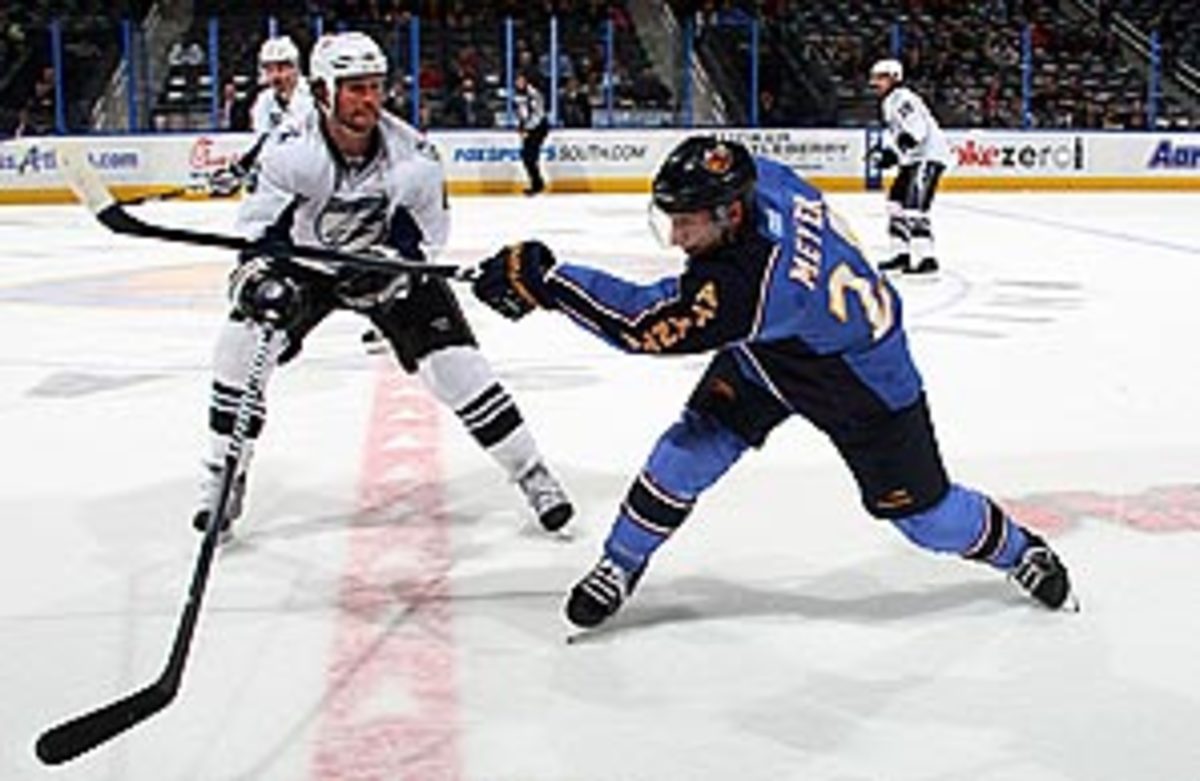The return of neutral zone sludge
Let me first say that NHL officials have the toughest job I can think of in the sport -- and that's just in the night-in night-out grind of ensuring that the games are safe and equitable. But referees have also become the custodians of the game -- the ones who are charged with keeping it moving forward in its evolution. That added burden is becoming harder, if not impossible, to bear.
After the neutral zone trap was widely blamed for choking scoring, and excitement, out of the game, officials were asked to unflinchingly uphold a strict standard of rules enforcement after the 2004-05 lockout. Games in the "New NHL" were initially power-play fests, and players adjusted as officials became more comfortable calling what had historically been considered soft hooking, holding and interference penalties. The result was more pace. Skating was accentuated on offense -- and it became a necessity on defense -- when use of the stick as a deterrent and leverage tool was all but abolished. The game improved immensely when players were forced to move their feet whether their team had the puck or not.
The unforeseen negative was the number of high-speed collisions that led to the ongoing focus on hits to the head. Intended or not, with the newest safety mandate front and center, interference has more than crept back into the defensive equation. On some level, this is a natural reaction to the fear that the game will lose its physical nature due to enforcement of the headshot rule. Interference as physical play subliminally becomes acceptable again as guys fight for their ice, but fighting for ice without the puck was what the 2005 rededication to the rulebook was all about.
Speed away from the puck was the main idea and it is the essence of the game at its best. Yet, neutral zone sludge is slowly beginning to build up across the league. The only way that happens is when defensive players who have little or no speed are allowed to clog lanes and slow their faster opponents by neutralizing them with subtle grabs, blocks and nudges instead of being forced to defend with equal quickness.
Offensive forechecking suffers when the area between the bluelines becomes a gauntlet of human speed bumps and rumble strips. Less speed means less quality time in the offensive zone, and that quality time is what the league wants. See: the recent ingenious tweaks to face-offs on icings (no personnel changes for the offending team) and for penalty calls (an offensive zone face-off no matter where the infraction occurred). But those are controlled situations that aid the offensive team. The intention of the 2005 no-interference mandate was to help the offense while play was underway.
The eyeball test tells me the game is now backsliding too much. Five players idling in the neutral zone in a 1-3-1 configuration has become more prevalent than the stretch pass. I even saw up-tempo aficionado Peter Laviolette of the Flyers pull all five of his guys into the neutral zone for long stretches recently. And why not? It conserves energy because less skating is involved. Defensive players are getting away with more while moving their feet less.
I'm not blaming the coaches. If they can gain an advantage, they have to take it. Guy Boucher is bogging down the ice from blueline to blueline, but he has his Tampa Bay Lightning in first place atop the Southeast Division and is challenging Laviolette's Flyers for the top spot in the Eastern Conference. Boucher's team gives up the fewest shots on goal in the NHL. His formula works.
It wouldn't have in 2006, though, when Laviolette jumped his peers by embracing stretch passes and aggressive two-man forechecking while leading the Carolina Hurricanes to the Stanley Cup. Defensemen had to turn and skate to retrieve the puck, with no obstruction of the offensive player's path until they both arrived at the puck and engaged in physical play at that point. Forwards had to backcheck to establish inside position on attackers away from the puck, without contact.
A little tug here, a little rub there, or an innocuous pick on a player anywhere might not seem like much. It may even seem more allowable now so that we don't eliminate all physical play from the game. But the cost is immeasurable when it comes to freedom, flow and room for the most skilled players to operate. The fine line between physicality and obstruction falls -- maybe unfairly -- on the referees. The line is blurred now, not in definition, but in execution. How do I know? Forget empirical data and watch, as static defensive positioning gains a foothold. That shouldn't happen if speed in the game is zealously preserved.
That's my call. It won't matter, though, if more calls aren't made at ice level.






